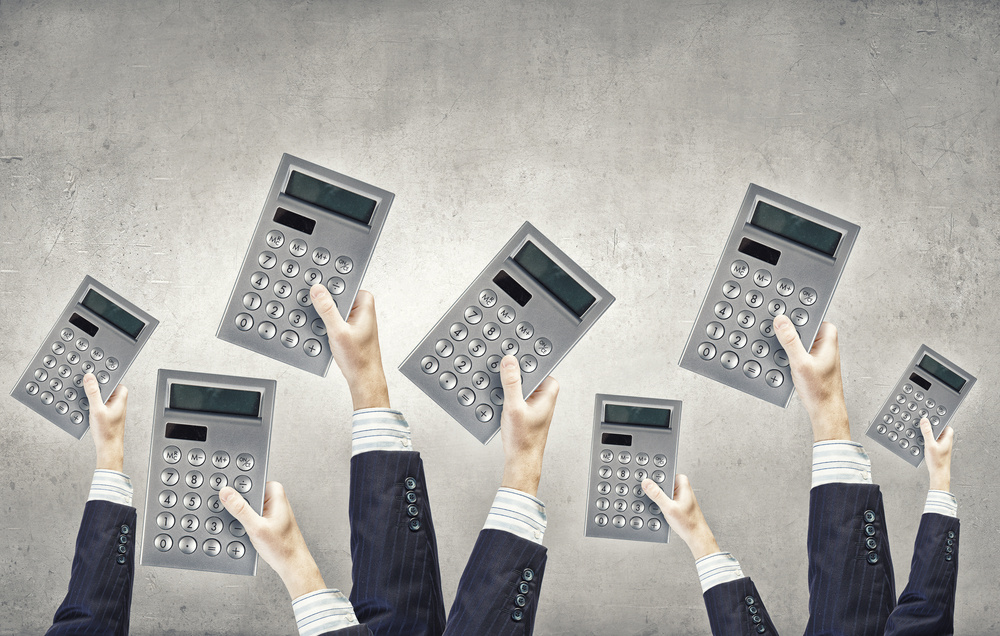Maverick Investor Group Reviews: How Do They Compare to Top Turnkey Providers?
Maverick Investor Group is a real estate broker that helps investors find and buyturnkey rentals. How does the company work, and how do Maverick...
6 min read
Rent To Retirement : Jul 26, 2024 3:02:00 PM

To build a successful real estate portfolio, you need to select the right properties to invest in. One of the easiest ways to screen properties for profit potential is by calculating the Gross Rent Multiplier or GRM. If you learn this simple formula, you can analyze rental property deals on the fly!
Gross rent multiplier (GRM) is a screening metric that allows investors to quickly see the ratio of a real estate investment to its annual rent. This calculation provides you with the number of years it would take for the property to pay itself back in collected rent. The higher the GRM, the longer the payoff period.
Gross rent multiplier (GRM) is among the simplest calculations to perform when you're evaluating possible rental property investments.
The GRM formula is simple: Property Value/Gross Rental Income = GRM.
Gross rental income is all the income you collect before factoring in any expenses. This is NOT profit. You can only calculate profit once you take expenses into account. While the GRM calculation is effective when you want to compare similar properties, it can also be used to determine which investments have the most potential.
Let's say you're looking at a turnkey property that costs $250,000. It's expected to bring in $2,000 per month in rent. The yearly rent would be $2,000 x 12 = $24,000. When you consider the above formula, you get:
$250,000/$24,000 = 10.4 GRM.With a 10.4 GRM, the payoff period in rents would be around 10 and a half years. When you're trying to determine what the ideal GRM is, make sure you only compare similar properties. The ideal GRM for a single-family residential home may differ from that of a multifamily rental property.
Looking for low-GRM, high-cash flow turnkey rentals?
|
Gross Rent Multiplier (GRM) |
Cap Rate |
|
Measures the return of an investment property based on its annual rents. |
Measures the return on an investment property based on its NOI (net operating income) |
|
Doesn’t take into account expenses, vacancies, or mortgage payments. |
Takes into account expenses and vacancies but not mortgage payments. |
Gross rent multiplier (GRM) measures the return of an investment property based on its annual rent. In comparison, the cap rate measures the return on an investment property based on its net operating income (NOI). GRM doesn't consider expenses, vacancies, or mortgage payments. On the other hand, the cap rate factors expenses and vacancies into the equation. The only expenses that shouldn't be part of cap rate calculations are mortgage payments.
The cap rate is calculated by dividing a property's NOI by its value. Since NOI accounts for expenses, the cap rate is a more accurate way to evaluate a property's profitability. GRM only considers rents and property value. That being said, GRM is significantly quicker to calculate than the cap rate since you need far less information.
When you're searching for the right investment, you must compare multiple properties against one another. While cap rate calculations can help you obtain an accurate analysis of a property's potential, you'll be tasked with estimating all your expenses. In comparison, GRM calculations can be performed in just a few seconds, which ensures efficiency when you're assessing numerous properties.
Try our free Cap Rate Calculator!
GRM is a great screening metric, meaning that you should use it to quickly evaluate many properties at once. If you're trying to narrow your options among ten available properties, you may not have enough time to perform numerous cap rate calculations.
For example, let's say you're buying an investment property in a market like Huntsville, AL. In this area, many homes are priced around $250,000. The average rent is nearly $1,700 per month. For that market, the GRM might be around 12.2 ($250,000/($1,700 x 12)).
If you're doing quick research on many rental properties in the Huntsville market and discover one specific property with a 9.0 GRM, you might have discovered a cash-flowing diamond in the rough. If you're looking at two similar properties, you can make a direct comparison with the gross rent multiplier formula. When one property has a 10.0 GRM, and another comes with an 8.0 GRM, the latter likely has more potential.
There's no such thing as a "good" GRM, although many investors shoot between 5.0 and 10.0. A lower GRM is usually associated with more cash flow. If you can earn back the price of the property in just five years, there's a good chance that you're receiving a large amount of rent every month.
However, GRM only functions as a comparison between rent and price. If you're in a high-appreciation market, you can afford for your GRM to be higher since much of your profit lies in the potential equity you're building.
Looking for cash-flowing investment properties?
If you're looking for ways to analyze the viability of a real estate investment before making an offer, GRM is a quick and easy calculation you can perform in a couple of minutes. However, it's not the most comprehensive investing tool at your disposal. Here's a closer look at some of the pros and cons associated with GRM.
There are many reasons why you should use gross rent multiplier to compare properties. While it shouldn't be the only tool you employ, it can be highly effective during the search for a new investment property. The main advantages of using GRM include the following:
While GRM is a useful real estate investing tool, it's not perfect. Some of the drawbacks associated with the GRM tool include the following:
If these calculations don't yield the results you want, there are a couple of things you can do to improve your GRM.
The most effective way to improve your GRM is to increase your rent. Even a small increase can lead to a substantial drop in your GRM. For example, let's say that you buy a $100,000 house and collect $10,000 per year in rent. This means that you're collecting around $833 per month in rent from your tenant for a GRM of 10.0.
If you increase your rent on the same property to $12,000 per year, your GRM would drop to 8.3. Try to strike the right balance between price and appeal. If you have a $100,000 property in a decent location, you may be able to charge $1,000 per month in rent without pushing prospective tenants away. Check out our full article on how much rent to charge!
You could also reduce your purchase price to improve your GRM. Keep in mind that this option is only viable if you can get the owner to sell at a lower price. If you spend $100,000 to buy a house and earn $10,000 per year in rent, your GRM will be 10.0. By lowering your purchase price to $85,000, your GRM will drop to 8.5.
GRM is NOT a perfect calculation, but it is a great screening metric that any beginning real estate investor can use. It allows you to efficiently calculate how quickly you can cover the property's purchase price with annual rent. This investing tool doesn't require any complex calculations or metrics, which makes it more beginner-friendly than some of the advanced tools like cap rate and cash-on-cash return.
The calculation for gross rent multiplier involves the following formula: Property Value/Gross Rental Income = GRM. The only thing you need to do before making this calculation is set a rental price.
You can even use multiple price points to determine how much you need to charge to reach your ideal GRM. The main factors you need to consider before setting a rent price are:
There is no single gross rent multiplier that you should strive for. While it's great if you can buy a property with a GRM of 4.0-7.0, a double-digit number isn't automatically bad for you or your portfolio.
If you want to reduce your GRM, consider lowering your purchase price or increasing the rent you charge. However, you shouldn't focus on reaching a low GRM. The GRM may be low because of deferred maintenance. Consider the property's operating costs, which can include everything from utilities and maintenance to vacancies and repair costs.
Gross rent multiplier differs from cap rate. However, both calculations can be helpful when you're evaluating rental properties. GRM estimates the value of an investment property by calculating how much rental income is generated. However, it doesn't consider expenses.
Cap rate goes a step further by basing the calculation on the net operating income (NOI) that the property generates. You can only estimate a property's cap rate by subtracting expenses from the rental income you bring in. Mortgage payments aren't included in the calculation.

Maverick Investor Group is a real estate broker that helps investors find and buyturnkey rentals. How does the company work, and how do Maverick...

Being a successful real estate investor requires you to regularly fine-tune your strategy to make sure you're implementing the best techniques...